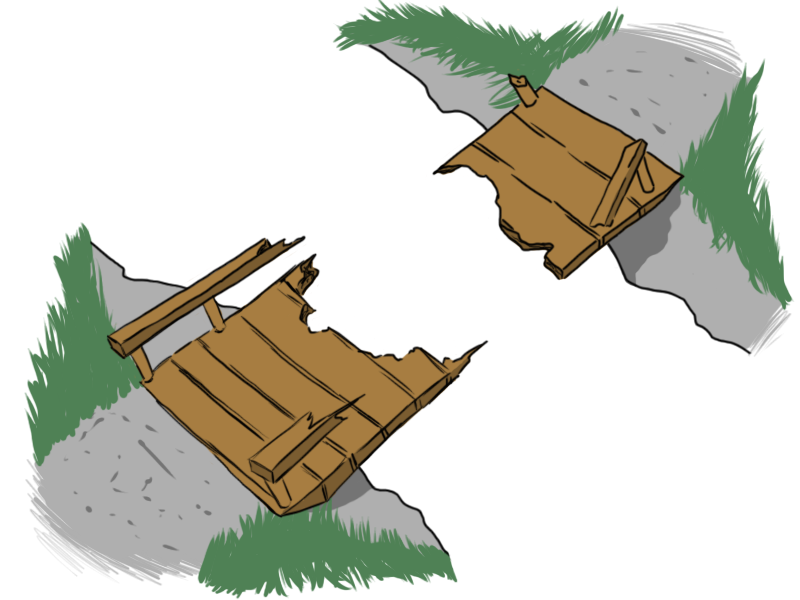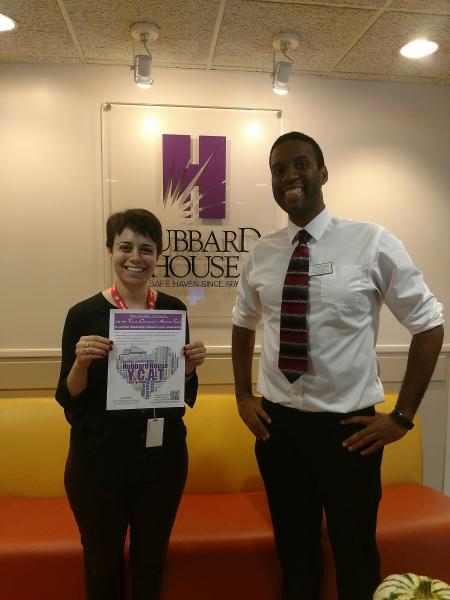Going Upstream and Empowering Youth
 A group of seven friends are lounging by a river and enjoying the beautiful Florida weather, when they see someone in the water struggling to stay afloat. A couple of the friends dive in to pull the drowning person to shore. Once they get the unresponsive person on land, two other friends begin CPR, alternating every five cycles. Just as the rescued person starts breathing again, another person comes drifting down the river, then another, and another. The friends are getting tired and are having more and more trouble keeping up with the rush of people floating down the river, when one of the friends begins to wonder where all the people are coming from. So she gets up and walks away. The other friends are too busy trying to save lives to go after her. She walks a little ways upstream, until she finds a bridge with a huge hole in it. She sees that people keep trying to cross the bridge. Some people can clear the hole, but most end up falling into the water below. She runs back to tell her friends about the problem, and they agree it’d be worthwhile to send some of their group to fix the bridge. With the bridge fixed, fewer people are falling into the river. There are still some who manage to fall in, but with the bridge fixed and the friends providing swimming lessons to the community, it only takes one person to help people out of the water instead of seven.
A group of seven friends are lounging by a river and enjoying the beautiful Florida weather, when they see someone in the water struggling to stay afloat. A couple of the friends dive in to pull the drowning person to shore. Once they get the unresponsive person on land, two other friends begin CPR, alternating every five cycles. Just as the rescued person starts breathing again, another person comes drifting down the river, then another, and another. The friends are getting tired and are having more and more trouble keeping up with the rush of people floating down the river, when one of the friends begins to wonder where all the people are coming from. So she gets up and walks away. The other friends are too busy trying to save lives to go after her. She walks a little ways upstream, until she finds a bridge with a huge hole in it. She sees that people keep trying to cross the bridge. Some people can clear the hole, but most end up falling into the water below. She runs back to tell her friends about the problem, and they agree it’d be worthwhile to send some of their group to fix the bridge. With the bridge fixed, fewer people are falling into the river. There are still some who manage to fall in, but with the bridge fixed and the friends providing swimming lessons to the community, it only takes one person to help people out of the water instead of seven.
I’ve come across this parable twice so far in my trainings, and I think it does a good job explaining the difference between prevention (fixing the bridge) and intervention (rescuing people), as well as the effectiveness of prevention. That’s not to say that it’s not a huge oversimplification, though. For instance, intervention work can be extremely worthwhile - you may have fixed the bridge, but there are the people who had already fallen in, as well as the people who fall into the river other ways. Moreover, prevention is not as simple as covering a hole in a bridge with a piece of plywood. The public health challenges we endeavor to solve are nuanced and deeply-rooted issues that require many levels of collaboration, perseverance, awareness, and understanding in order to be combated successfully.
 This parable and its emphasis on the importance of preventative work can easily be applied to all areas of public health. Through my service term with AmeriCorps National Health Corps-FL at Hubbard House, I’ve learned a lot about how this “upstream model” applies to intimate partner violence (IPV) in particular. In my day-to-day as the Violence Prevention Facilitator for Youth, “going upstream” means empowering youth to practice and promote healthy relationship behaviors and to challenge the social norms that perpetuate abusive behaviors. In a recent training I attended, we discussed the importance of true youth empowerment as opposed to mere tokenism. In other words, we discussed the difference between a program that’s organized and led by youth versus a program in which youth have no say but are included to promote the appearance of youth involvement. This led me to reflect a bit on my own adultism in my efforts to “fix the bridge.” I always put a lot of thought into the ways I manage the classrooms I visit and the topics I teach, but there’s definitely room for improvement. For example, the violence-prevention curriculum that I use with 4th and 5th graders repeatedly emphasizes to students that they should always go to an adult for help with bullies. This line of thought assumes that young people are unable to deal with problems themselves and that any adult they go to will be able to provide them with adequate help. There are some situations that students can navigate best on their own or with their friends, and there are some adults who may not give the most useful and relevant advice.
This parable and its emphasis on the importance of preventative work can easily be applied to all areas of public health. Through my service term with AmeriCorps National Health Corps-FL at Hubbard House, I’ve learned a lot about how this “upstream model” applies to intimate partner violence (IPV) in particular. In my day-to-day as the Violence Prevention Facilitator for Youth, “going upstream” means empowering youth to practice and promote healthy relationship behaviors and to challenge the social norms that perpetuate abusive behaviors. In a recent training I attended, we discussed the importance of true youth empowerment as opposed to mere tokenism. In other words, we discussed the difference between a program that’s organized and led by youth versus a program in which youth have no say but are included to promote the appearance of youth involvement. This led me to reflect a bit on my own adultism in my efforts to “fix the bridge.” I always put a lot of thought into the ways I manage the classrooms I visit and the topics I teach, but there’s definitely room for improvement. For example, the violence-prevention curriculum that I use with 4th and 5th graders repeatedly emphasizes to students that they should always go to an adult for help with bullies. This line of thought assumes that young people are unable to deal with problems themselves and that any adult they go to will be able to provide them with adequate help. There are some situations that students can navigate best on their own or with their friends, and there are some adults who may not give the most useful and relevant advice.
When helping adult survivors of IPV, we emphasize the importance of advocacy and empowerment. Abusers use power and control, so it is important that the survivor reclaims and maintains control throughout their healing process. How do we implement this empowerment-based approach in our interactions with youth? How do we balance youth empowerment with classroom management? How to we navigate the differences between guidance and instruction? I’m eager to continue exploring these “upstream” questions throughout my year of service at Hubbard House!
Images:
http://web.mit.edu/puzzle/www/2017/assets/general/quests/bridge-scene.png
This blog post was written by NHC FL member, Leonie Cohen.
Leonie serves at Hubbard House as a Health Educator.